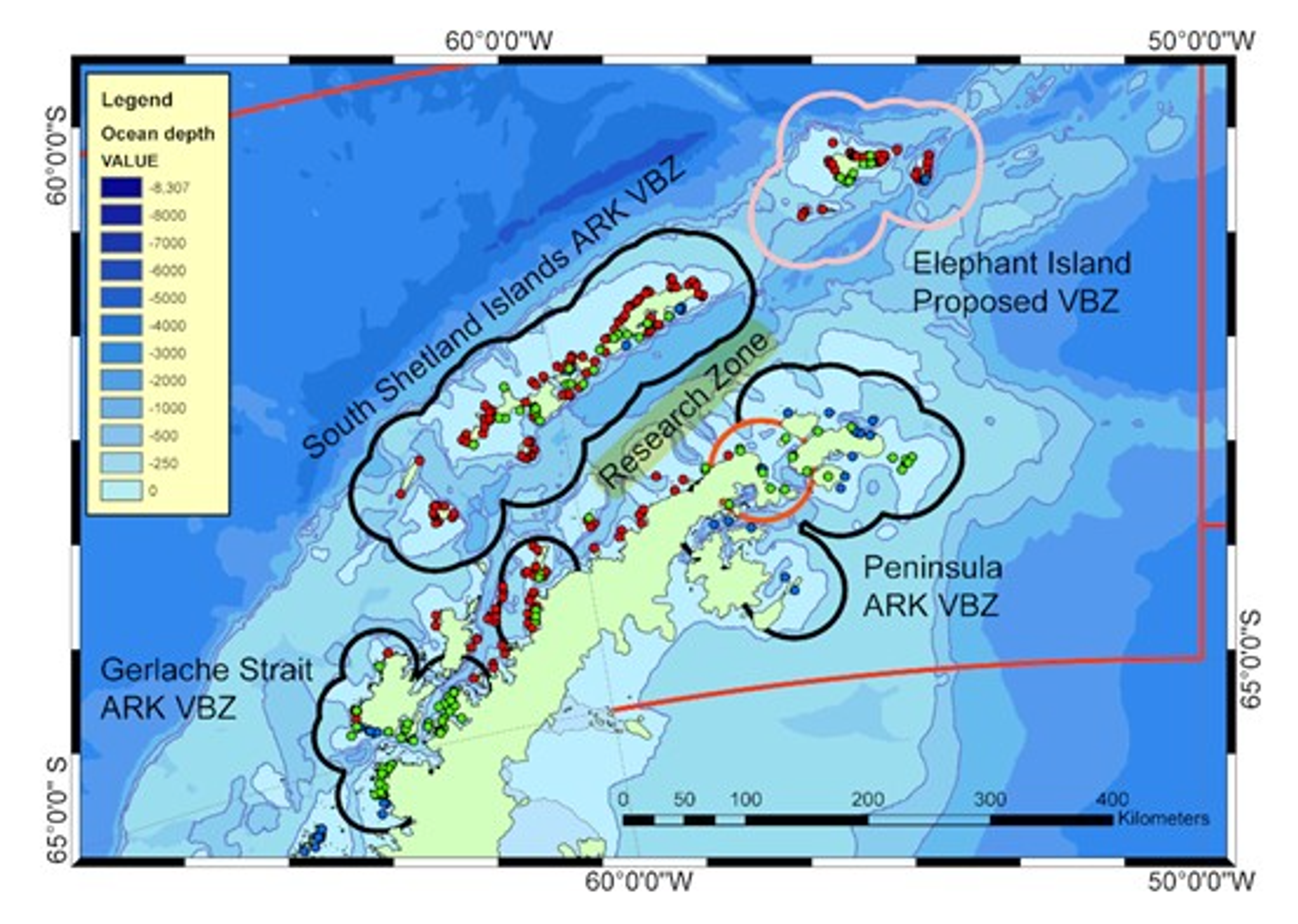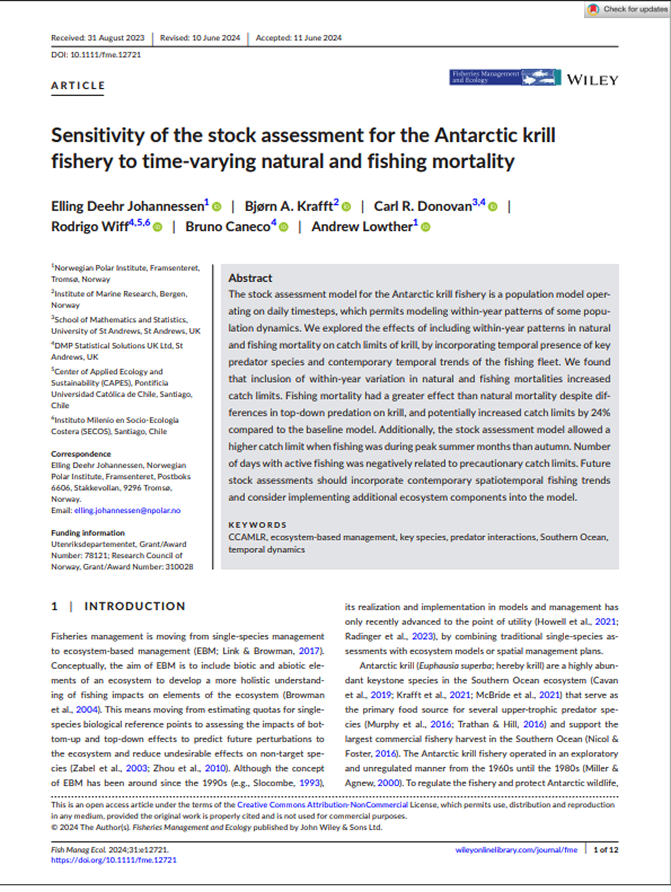Fisheries management
Antarctic ecosystem
Krill (Euphausia superba)
Voluntary actions by the Antarctic krill fishing industry help reduce potential negative impacts on land-based marine predators during breeding, highlighting the need for CCAMLR action
Summary
This study documents how Antarctic krill fishing companies voluntarily created buffer zones around important penguin breeding colonies on the Antarctic Peninsula. These industry-led voluntary buffer zones (VBZ) ban krill fishing during penguin breeding seasons to reduce competition between commercial fisheries and krill-dependent predators.The fishing industry implemented these measures because CCAMLR (Commission for the Conservation of Antarctic Marine Living Resources) has been slow to establish formal ecosystem-based management. While the authors view these voluntary actions as beneficial, they argue this highlights the urgent need for CCAMLR to take official management action.The study demonstrates how responsible industry can protect marine ecosystems when regional management bodies struggle to act, but emphasizes that voluntary measures alone are insufficient - comprehensive, legally binding management by CCAMLR remains essential for long-term Antarctic marine protection.

1
Map showing ARK's voluntary buffer zones (VBZ; black areas) within Subarea 48.1 around the South Shetland Islands (40 km buffer zone), the northern tip of the Antarctic Peninsula (40 km buffer zone), and northern and southern areas of the Gerlache Strait (30 km buffer zones). From 2021, the ARK agreement also includes year-round protection for the Hope Bay colonies (orange) within the Peninsula ARK-VBZ. The map also shows a new proposed VBZ around Elephant Island (pink) and a proposed research zone where fishing can occur, but where data collection would be required. The locations of known breeding colonies for gentoo (green), chinstrap (red), and Adélie (blue) penguins are shown.Key Findings
1
Voluntary buffer zones established by ARK (Association of Responsible Krill harvesting companies) in 2018 2
VBZ protect important penguin breeding areas during critical breeding periods 3
Without CCAMLR action, the VBZ will be the only regulation providing spatial and temporal protection 4
Industry-led measures can supplement but not replace formal ecosystem-based management 

